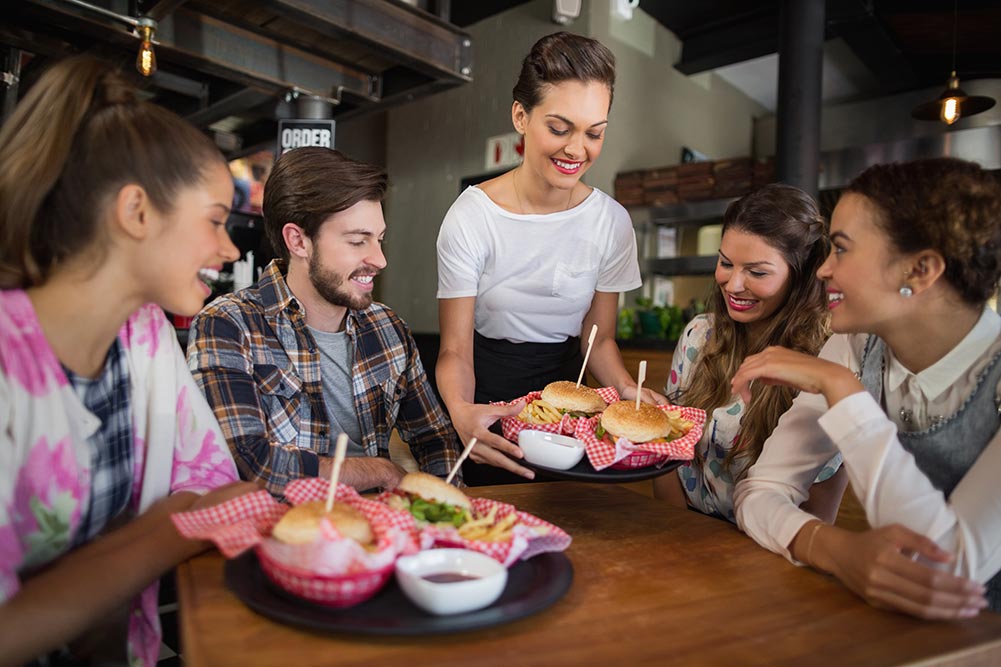- Navigator
- Business Retention and Expansion (BRE)
- Industry Analytics and Strategy
- Retail, Services, and Accommodations
 Throughout my life, one of my passions has been exploring restaurants whenever I travel or engage in hobbies in my hometown. It’s not just about the food; it’s also an opportunity for people-watching, community interaction, making new friends, and hosting various social events like business meetings, birthdays, and more.
Throughout my life, one of my passions has been exploring restaurants whenever I travel or engage in hobbies in my hometown. It’s not just about the food; it’s also an opportunity for people-watching, community interaction, making new friends, and hosting various social events like business meetings, birthdays, and more.
Over the years, I’ve witnessed beloved restaurants come and go. However, COVID-19 caused so many sudden and significant changes within the industry that 10.2% of US restaurants permanently closed in the first year of the pandemic, according to the food service research firm Datassential. These changes continue to have lingering effects and have certainly contributed to more recent restaurant closures as well.
In my hometown of Missoula, MT, a longstanding chain restaurant called Jakers Bar and Grill closed its doors last summer after 25 years in business. As a regular customer, I witnessed the changes they made to their service model during and after the pandemic, including the removal of their very popular salad bar. In my opinion, these changes resulted in far fewer customers returning to the restaurant after the restrictions were lifted and eventually led to their closure.
The restaurants that survived the pandemic found ways to adapt, successfully transforming their business models and adopting new technologies along the way.
The Rise of Delivery Services and Food Trucks
 For most of the last century, only pizza parlors and perhaps a few other local restaurants offered delivery unless you lived in a big city. However, that all changed in the early 2000s with the introduction of delivery services like DoorDash, Grubhub, Postmates, and Uber Eats. While the growth of these services was steady before COVID-19, their popularity exploded during the pandemic.
For most of the last century, only pizza parlors and perhaps a few other local restaurants offered delivery unless you lived in a big city. However, that all changed in the early 2000s with the introduction of delivery services like DoorDash, Grubhub, Postmates, and Uber Eats. While the growth of these services was steady before COVID-19, their popularity exploded during the pandemic.
According to a recent report from Bloomberg Second Measure, food delivery companies saw a staggering 162% increase in monthly sales in 2020 and have enjoyed slower but continuing growth in the following years. However, there’s speculation about how long consumers will continue paying for these services, as food and delivery prices have also steadily increased.
Another popular alternative during and after the pandemic has been food trucks, which offer diners and owners a more affordable alternative to traditional brick-and-mortar dine-in restaurants.
According to The American Consumer Institute Center for Citizen Research, the popularity of food trucks has been growing rapidly for over a decade. But their popularity boomed during the pandemic because they were perfectly suited to meet the new demand for socially distanced, to-go meals.
While food trucks can be more profitable due to lower labor costs, they do have some limitations and challenges. This includes difficulty operating year-round in areas with more extreme hot and cold weather, the rising cost of food, and supply chain disruptions. Also, with the exception of some food truck clusters that have covered customer seating, food trucks do not offer the cozy social atmosphere that some people look for when they dine out.
Shopping Malls Offer New Opportunities for Restaurants
A few months ago, my colleague, Karen Meier, wrote a three-part series of articles about the growth, decline, and rebirth of the American shopping mall. In it, she shared examples of shopping malls across the US that have been making big changes in an effort to stay relevant in the face of rapidly changing consumer preferences. These changes often include how malls approach food service, which has presented new opportunities for the restaurant industry.
Food Courts and Food Halls
While traditional food courts featuring national or regional chain restaurants like Sbarro, Jamba Juice, Auntie Anne’s, and Panda Express remain a central fixture in many shopping malls, others have made significant changes to that formula in an effort to attract new customers. This includes welcoming more locally-owned restaurants and offering a wider variety of ethnic cuisines.
Another growing trend is the food hall, which typically focuses on providing unique international or artisanal dining experiences to bring more visitors to the mall. Examples include the Flagship Commons food hall at Westroads Mall in Omaha and the Singapore-style Asean StrEAT Food Hall at Westlake Center in Seattle.
Sit-Down Restaurants
In some places, shopping malls are hoping to attract more customers by filling previously vacant retail spaces with new dine-in restaurants. For instance, Southgate Mall in Missoula welcomed a Texas Roadhouse and is set to open a new Mexican restaurant soon. The Beverly Center in Los Angeles completely eliminated its food court in favor of creating a fine dining hub featuring a variety of chef-driven sit-down restaurants.
The Future of the Restaurant Industry
 Restaurants that survived the pandemic continue to face uncertainty and challenges, including ongoing labor shortages, rising food and equipment costs, and changes in consumer behaviors. Some of these issues may be resolved in the short term, but others, including labor shortages and rising costs, will likely take longer to stabilize.
Restaurants that survived the pandemic continue to face uncertainty and challenges, including ongoing labor shortages, rising food and equipment costs, and changes in consumer behaviors. Some of these issues may be resolved in the short term, but others, including labor shortages and rising costs, will likely take longer to stabilize.
Although restaurant closures tend to grab more headlines, there have been many more success stories within the industry than failures. In fact, according to a recent report from the National Restaurant Association, the food industry is projected to surpass $1 trillion in sales for the first time in history in 2024.
The restaurant industry also experienced an innovation revolution during the pandemic, with new business practices and technology helping many restaurants stay open. These ranged from low-tech to high-tech and included:
- Adding new outdoor seating areas
- Partnering with delivery service providers
- Using “ghost kitchens” to help fill delivery orders with a lower overhead cost (the use of ghost kitchens has been scaled back more recently)
- Installing UV air sterilizers and HEPA air filtration systems
- Using Smart Point-Of-Service (POS) software systems and digital menu management tools
- Providing contactless digital payment options and contactless tableside ordering
Four years after the first lockdown, it’s obvious that these new business models and technologies aren’t going anywhere soon. This is good news in an uncertain world, as their adoption helps improve a restaurant’s resiliency and ability to weather future disruptions.
However, it’s important to remember that many consumers still value the human hospitality offered by dine-in restaurants. It’s important for restaurants to balance new technologies and business models with continuing to provide the social interaction and sense of community that many customers enjoy.
How Economic Developers Can Help the Restaurant Industry
Throughout the COVID-19 pandemic, local, state, and federal economic developers helped restaurants survive in various ways, from providing small business support grants and zero-interest bridge loans to changing local land use codes to allow for outdoor seating and deferring or waiving taxes and fees.
Restaurants are present in nearly every community in the nation and play a major role in the quality of life for residents, and they also often support a region’s visitation economy. Restaurant workers, along with retail and other service employees, are like ambassadors for your community and often leave lasting impressions on the clientele. Moving forward from the pandemic, economic developers still have a role to play in supporting this important industry:
- Consult with the restaurant community to determine whether making any of the temporary code changes made during the pandemic permanent would be helpful. Some examples could be related to outdoor seating areas and dedicated to-go/pickup on-street parking spots.
- Facilitate or provide training for restaurant management and staff about:
- Crisis/emergency planning and resiliency
- The benefits and use of new digital technologies
- Websites, social media, and other digital marketing tools
- Include restaurants in conversations and workshops about workforce retention and attraction and connect them with potential pools of candidates.
- Include restaurants in discussions around the visitation economy and provide materials and foundational training that will support frontline staff for large scale events.
- Create a business retention and expansion (BRE) program that builds and sustains strong relationships with all local businesses, including restaurants, and provides them with updated information and access to available resources.
- Offer grant funding opportunities to help restaurant owners purchase and use new technology to improve resiliency.
If you are looking to better understand your community’s restaurant industry and its workforce challenges or need help developing a new business retention and expansion program, Camoin Associates can help.
Learn more about our Industry Analytics and Strategy services
Learn more about our Workforce Development and Talent Retention services
Learn more about our Business Retention and Expansion services
Despite the changes that have happened over the last five years, I continue to visit my favorite restaurants to enjoy the social atmosphere and great food, and I hope that more people will do the same. Dine out and enjoy the unique hospitality that restaurants can offer.





